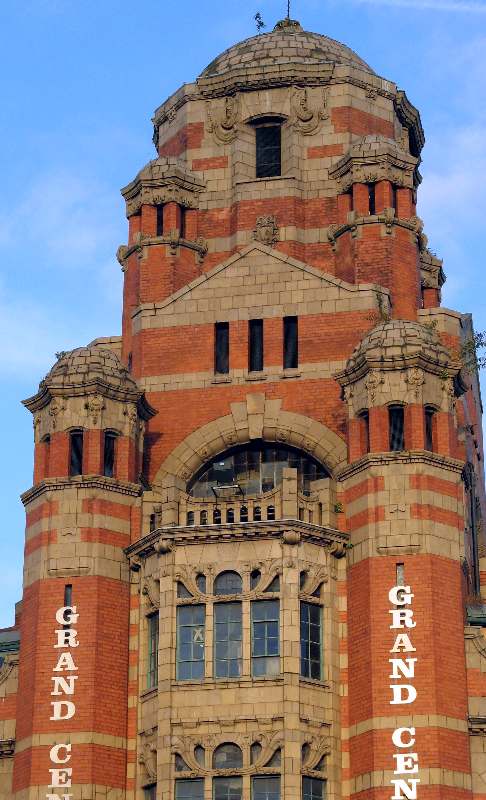Renshaw Street, Liverpool L1

Picture by Gabi Reinsch

|
This building opened in 1905 as the Liverpool Central (Charles Garrett Memorial) Hall of The Liverpool Wesleyan Mission. It was designed as a new kind of church, looking more like a department store and the ground floor was always intended to contain sub-let shops or other businesses. Pevsner describes the architectural style as promiscuously mixing 'Classical, Byzantine, Gothic and Jacobean'. Central Hall belongs to a group of buildings of the time, of which Westminster Hall in London is the best known. Although essentially churches, they were designed to provide many facilities and events to counter the call of the public house. At Central Hall this included commercial film shows. For a considerable period it was by far the largest cinema in Central Liverpool, seating 3,600 and taking standing customers too. From 1933 to 1939 it housed The Royal Liverpool Philharmonic Orchestra, whose building on Hope Street had been destroyed by fire. After use by The Department of Health & Social Security and a period of dereliction, it re-opened in 1998 as Grand Central, ironically a glorified public house. Part of the ground floor was styled Barcelona, a drinking establishment which played up the building's art-deco dressings with Gaudi-styled ground floor windows. The licensed premises are now reduced to an Irish themed pub, presently painted blue.
The main space
beneath the highest dome now provides a home for the Quiggins emporium,
a collective of arts & crafts and alternative traders, using the floor
of the balconied hall. The building's original art nouveau dressings are
of yellow terracotta against red brick. The entrance has a huge clock,
flanked by two cartouches, each containing a Liver bird. On the short
Upper Newington side elevation there are swags and empty globed
cartouches, a motif repeated along the longer Renshaw Street frontage.
The whole assembly is a complex swirl of towers and turrets, domes and
columns and bays and balconies. It is altogether a grander and more
sumptuous building than our everyday passing allows. Alan Maycock © 2008 |